包裝袋
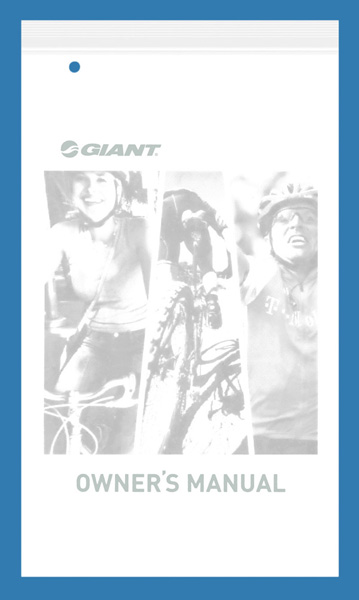 塑膠袋
塑膠袋
品名: 文書資料袋
材質: PE一般透明夾鏈袋
尺寸範圍: 寬 140~ 450 mm
長 200~ 500 mm
厚 0.05~0.12 mm
包裝用途: 文書資料
印刷顏色: 灰單面1色
條件: 1.染乳白
2.左上角打一洞
3.深淺版
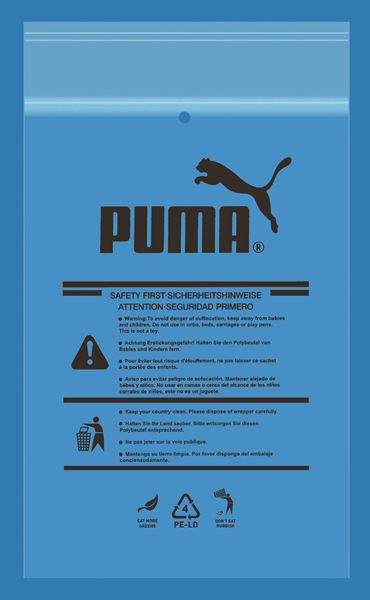 塑膠袋
塑膠袋
品名: 鞋材樣品袋
材質: PE一般透明夾鏈袋
尺寸範圍: 寬 140~ 450 mm
長 200 ~ 550 mm
厚 0.05~ 0.1 mm
包裝用途: 鞋子鞋材樣品
印刷顏色: 黑、藍單面2色
條件: 1.透明袋
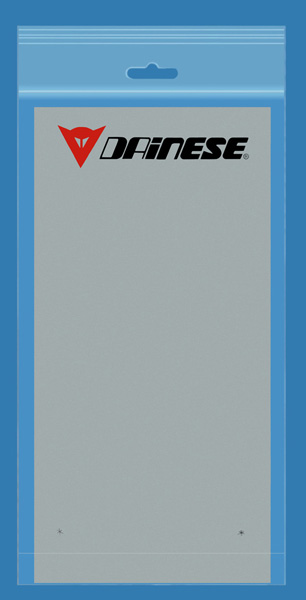 塑膠袋
塑膠袋
品名: 雪地手套袋
材質: PE一般透明夾鏈袋
尺寸範圍: 寬 120~ 350 mm
長 250 ~ 500 mm
厚 0.06~0.12 mm
包裝用途: 雪地手套
印刷顏色: 正面:銀、黑、紅 背面:黑、紅雙面共5色
條件: 1.袋口打蝴蝶洞
2.袋口長40~50 m/m
3.折角20m/m
4.左下角、右下角各打一個*洞
 塑膠袋
塑膠袋
品名: 鞋材袋
材質: PE一般透明夾鏈袋
尺寸範圍: 寬 100~ 600 mm
長 140~ 600 mm
厚 0.05~ 0.1 mm
包裝用途: 鞋材
印刷顏色: 朱白、藍單面1色
條件: ?
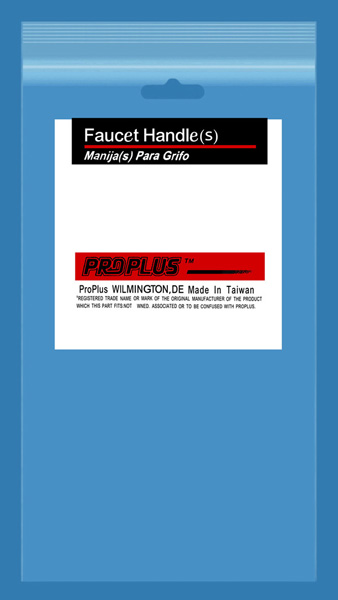 塑膠袋
塑膠袋
品名: 衛浴用品袋
材質: PE一般透明夾鏈袋
尺寸範圍: 寬 70~ 300 mm
長 140~ 400 mm
厚 0.055~0.1 mm
包裝用途: 衛浴用品
印刷顏色: 白、紅、黑單面3色
條件: 1.要套色
2.夾鏈下打蝴蝶洞
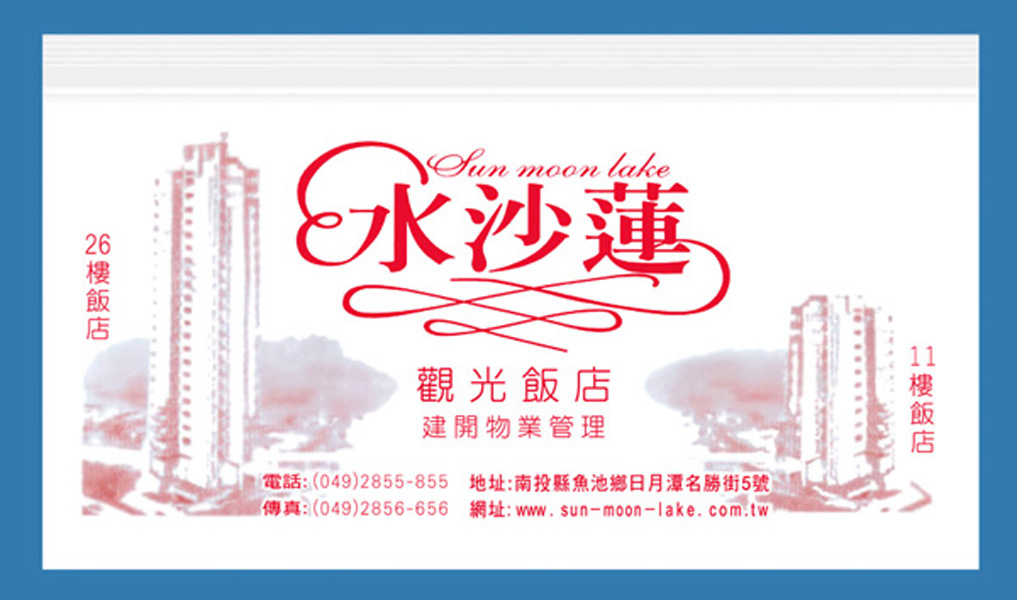 塑膠袋
塑膠袋
品名: 盥洗用具袋
材質: PE一般透明夾鏈袋
尺寸範圍: 寬 100 ~ 400 mm
長 120 ~ 400 mm
厚 0.055~0.1 mm
包裝用途: 觀光飯店、毛巾、盥洗用具
印刷顏色: 灰、深紅、紅單面3色
條件: 1.深淺版
包裝袋的多樣性與未來趨勢
在現代社會,包裝袋已成為我們日常生活中不可或缺的一部分。無論是購物、運輸,還是禮品包裝,包裝袋的身影無處不在。隨著環保意識的提升與科技的進步,包裝袋的種類和用途也在不斷演變。本文將探討包裝袋的多樣性及其未來的發展趨勢。
包裝袋的起源與演變
包裝袋的歷史可以追溯到幾千年前,當時的人們就已經使用動物皮毛和植物纖維製作簡單的袋子來攜帶物品。隨著時間的推移,袋子的材料和製作工藝不斷改進。到了工業革命時期,隨著塑料的發明和廣泛應用,塑料包裝袋迅速普及。塑料袋因其成本低廉、輕便耐用而受到廣泛歡迎,成為最常見的包裝材料之一。
然而,隨著人們對環境保護的重視,塑料袋的環境問題逐漸浮現。塑料袋難以分解,對環境造成了嚴重污染,這使得各國政府紛紛出台禁塑令,推動環保型包裝袋的發展。在此背景下,紙袋、可降解塑料袋以及可重複使用的布袋等環保包裝袋開始受到人們的青睞。
包裝袋的多樣性
現今市場上的包裝袋種類繁多,根據用途和材質的不同,可大致分為以下幾類:
1. 塑料包裝袋
塑料包裝袋是最常見的包裝袋類型,主要由聚乙烯、聚丙烯等材料製成。塑料袋具有輕便、耐水、耐腐蝕等特點,因此被廣泛應用於購物、食品包裝、醫療包裝等領域。然而,塑料袋的環境問題引發了全球範圍內的關注,許多國家和地區已經開始限制或禁止使用一次性塑料袋。
2. 紙質包裝袋
紙質包裝袋是一種環保型包裝袋,主要用於食品包裝、購物袋等用途。紙袋具有可降解、可回收的優勢,且印刷效果好,常用於高檔品牌的包裝。然而,紙袋的製作過程中需要消耗大量的水資源和能源,這使得其環保性也受到一定的質疑。
3. 布質包裝袋
布質包裝袋通常由棉布、麻布等材料製成,具有耐用、可重複使用的特點。隨著環保意識的提高,布袋逐漸成為購物袋的主流選擇之一。許多商場和超市開始提供可重複使用的布袋,並鼓勵消費者使用。此外,布袋還可以根據需要進行個性化設計,成為一種時尚潮流。
4. 生物降解包裝袋
生物降解包裝袋是目前最具發展潛力的包裝袋之一。這種包裝袋主要由可再生資源如玉米澱粉、甘蔗纖維等材料製成,能在自然環境中分解,減少對環境的負擔。隨著科技的不斷進步,生物降解包裝袋的性能和成本效益也在不斷提升,成為未來包裝袋市場的發展方向。
包裝袋的環境影響
包裝袋的廣泛使用給環境帶來了巨大壓力。塑料袋的長期使用導致了全球範圍內的塑料污染問題。塑料袋在自然環境中難以分解,可能需要幾百年才能完全降解,而在此過程中,它們會分解成微塑料,對海洋生物和整個生態系統造成嚴重威脅。此外,塑料袋的生產過程中也會產生大量的二氧化碳和其他溫室氣體,加劇了全球變暖的問題。
相比之下,紙袋和布袋雖然在某種程度上緩解了塑料污染問題,但它們也並非完全無害。紙袋的生產需要砍伐大量樹木,對森林資源造成壓力,而布袋的生產則消耗了大量的水資源。因此,如何在環保和實用性之間取得平衡,成為包裝袋發展中的一個重要課題。
包裝袋的未來趨勢
隨著環保意識的不斷提高,包裝袋的發展趨勢呈現出多元化和環保化的特徵。未來,包裝袋市場將朝著以下幾個方向發展:
1. 環保材料的應用
隨著科技的進步,更多環保材料將被應用於包裝袋的製作中。例如,生物降解材料、再生紙張、植物纖維等將成為未來包裝袋的重要原料。這些材料不僅具備可降解、可回收的特性,還能有效減少對環境的影響。
2. 可重複使用包裝袋的普及
未來,隨著環保政策的推動和消費者意識的提高,可重複使用包裝袋將成為市場的主流。商家將更加注重包裝袋的耐用性和設計美觀度,推出更多符合消費者需求的產品。此外,政府可能會通過立法和政策鼓勵使用可重複使用的包裝袋,限制一次性塑料袋的使用。
3. 包裝袋設計的創新
隨著市場競爭的加劇,包裝袋設計的創新將成為吸引消費者的重要手段。未來的包裝袋將不僅僅是功能性的產品,還將成為一種時尚和文化的象徵。設計師將通過色彩、材質、形狀等多方面的創意設計,打造獨具特色的包裝袋,滿足消費者的個性化需求。
4. 智能包裝袋的發展
隨著物聯網技術的發展,智能包裝袋可能成為未來的一大趨勢。例如,嵌入RFID芯片的包裝袋可以實現產品追蹤和防偽,具備溫度感應功能的包裝袋可以監控食品的保鮮狀態。這些智能功能將為消費者帶來更多便利,同時也為包裝袋市場帶來新的增長點。
5. 綠色包裝理念的推廣
未來,綠色包裝理念將深入人心。企業將更加注重包裝袋的全生命周期管理,從材料選擇、生產工藝、使用過程到廢棄物處理,均考慮到環保因素。消費者也將逐步形成綠色消費習慣,優先選擇環保型包裝袋,這將進一步推動包裝袋市場向可持續發展的方向邁進。
結論
包裝袋作為一種日常用品,隨著社會的進步和環保意識的提高,正經歷著深刻的變革。從塑料袋到紙袋、布袋,再到生物降解袋,包裝袋的多樣性和未來趨勢體現了人們對環境保護的重視和對科技創新的不懈追求。隨著環保材料的應用、可重複使用包裝袋的普及以及智能包裝袋的發展,包裝袋市場將迎來更多機遇和挑戰。如何在實用性與環保性之間取得平衡,將成為未來包裝袋設計與生產的重要課題。企業、政府和消費者都應共同努力,推動包裝袋行業朝著綠色、可持續的方向發展,為地球的未來貢獻一份力量。
除了環保和技術層面的變化,包裝袋還在社會和文化領域中扮演著重要角色。隨著全球化和消費文化的深入發展,包裝袋的設計和使用方式反映了社會價值觀的變遷以及文化交流的日益頻繁。
包裝袋與消費文化
包裝袋已經成為現代消費文化的重要象徵之一。無論是高檔品牌還是普通零售商,包裝袋的設計都在傳遞著品牌的理念和價值觀。對於某些高端品牌來說,包裝袋甚至被視為品牌身份的一部分,其設計往往體現了品牌的高貴、優雅和獨特性。例如,一些奢侈品品牌的包裝袋通常選用高質量的材料,並在設計上精益求精,以此來強化品牌的高端形象。
在大眾消費市場中,包裝袋的設計則更加注重實用性和大眾化需求。這些包裝袋通常以簡潔、實用為主,但也不乏創意設計,這些設計往往能夠吸引消費者的注意力,並促進購買行為。此外,某些零售商會利用包裝袋進行促銷活動,如印製折扣信息或是贈送限量版包裝袋,這些策略都有效地提升了消費者的購買欲望。
包裝袋與文化交流
包裝袋也是文化交流的一個重要媒介。在國際貿易和旅遊業的推動下,來自不同文化背景的包裝袋被帶到了世界各地,成為文化交流的一部分。特別是在旅遊業中,包裝袋常常被作為紀念品的一部分,它們往往印有當地的名勝古蹟、文化符號或是風土人情,成為外地遊客帶回家的文化記憶。
此外,包裝袋的設計風格也會受到本地文化的影響。例如,在亞洲地區,包裝袋的設計往往具有濃厚的傳統文化元素,如中國的紅色喜慶包裝袋、日本的浮世繪風格包裝袋等,這些元素不僅體現了當地的文化特色,還能增強消費者的文化認同感。
包裝袋的社會責任
隨著社會對企業社會責任的關注度不斷提升,包裝袋作為企業形象的一部分,其設計和使用方式也反映了企業對環境保護和社會責任的承諾。越來越多的企業開始重視包裝袋的環保性能,並將其作為履行社會責任的重要手段之一。
例如,許多企業開始使用可回收材料或生物降解材料製作包裝袋,並在包裝袋上標註環保標誌,以向消費者傳遞其環保理念。此外,一些企業還會通過包裝袋推廣環保教育,在包裝袋上印製有關環保的知識或宣傳標語,以提高公眾的環保意識。
包裝袋的社會責任還體現在對公平貿易的支持上。某些企業選擇與發展中國家的手工藝者合作,製作具有當地特色的包裝袋,並以公平的價格購買這些產品,從而促進當地經濟發展,並幫助這些社區擺脫貧困。
包裝袋的美學價值
除了功能性和環保性,包裝袋的美學價值也越來越受到重視。在現代設計中,包裝袋不僅僅是一個裝載物品的工具,它還承載著藝術和美學的價值。一些設計師將包裝袋視為一種表現藝術的媒介,通過顏色、圖案、質感等元素的搭配,創造出富有美感的包裝袋,這些包裝袋不僅能夠吸引消費者的注意,還能成為收藏品。
例如,某些限量版的設計師包裝袋由於其獨特的設計和限量發行,成為消費者爭相收藏的對象。一些包裝袋甚至在二手市場上具有不菲的價值,成為時尚潮流的一部分。這也反映了現代社會對美學和設計的高度重視。
此外,包裝袋的美學價值還體現在其與公共藝術的結合上。許多城市在推動公共藝術的過程中,將包裝袋設計作為一種藝術表現形式,通過舉辦設計比賽、展覽等活動,鼓勵市民參與包裝袋的設計,從而提升公眾的藝術素養和文化品位。
包裝袋的挑戰與未來展望
儘管包裝袋在現代社會中發揮著重要作用,但它也面臨著諸多挑戰。首先,環保問題仍然是包裝袋行業面臨的最大挑戰之一。如何減少包裝袋對環境的影響,並推動可持續發展,成為業界亟待解決的問題。
其次,隨著消費者需求的多樣化和個性化趨勢的增強,包裝袋的設計和生產也需要更加靈活和創新。企業需要不斷探索新的設計理念和技術手段,以滿足消費者對包裝袋功能性和美學性的多重要求。
最後,包裝袋的市場競爭日益激烈,尤其是在電子商務蓬勃發展的今天,包裝袋的質量和設計成為影響消費者購物體驗的重要因素。如何在保證質量的同時,降低生產成本,並提高設計的創意性,將成為包裝袋行業未來發展的關鍵。
展望未來,包裝袋行業將朝著更環保、更智能和更美觀的方向發展。隨著技術的進步,新的材料和設計理念將不斷湧現,為包裝袋行業帶來更多的機遇和挑戰。同時,隨著消費者對環保和美學的需求不斷提高,包裝袋將不僅僅是物品的載體,更將成為傳遞品牌理念、表達文化內涵的重要工具。
總的來說,包裝袋的未來發展充滿了無限可能。企業、設計師和消費者需要共同努力,推動包裝袋行業的可持續發展,並在這一過程中,不斷探索和創新,為社會和環境帶來更多的積極影響。通過不斷的改進和創新,包裝袋將在未來成為更環保、更智能、更具美學價值的重要產品,並在我們的日常生活中扮演越來越重要的角色。
Diversity and future trends of packaging bags
In modern society, packaging bags have become an indispensable part of our daily lives. Whether it is shopping, transportation, or gift packaging, packaging bags are everywhere. With the improvement of environmental awareness and the advancement of technology, the types and uses of packaging bags are also constantly evolving. This article will explore the diversity of packaging bags and their future trends.
The origin and evolution of packaging bags
The history of packaging bags can be traced back thousands of years, when people used animal skins and plant fibers to make simple bags to carry items. Over time, the materials and craftsmanship of bags have continued to improve. During the Industrial Revolution, with the invention and widespread application of plastics, plastic packaging bags quickly became popular. Plastic bags are widely popular due to their low cost, lightweight and durability, making them one of the most common packaging materials.
However, as people pay more attention to environmental protection, the environmental problems of plastic bags have gradually emerged. Plastic bags are difficult to decompose and cause serious pollution to the environment. This has led governments around the world to issue plastic bans to promote the development of environmentally friendly packaging bags. Against this background, environmentally friendly packaging bags such as paper bags, degradable plastic bags, and reusable cloth bags have begun to gain popularity.
Variety of packaging bags
There are many types of packaging bags on the market today, which can be roughly divided into the following categories according to their uses and materials:
1. Plastic packaging bags
Plastic packaging bags are the most common type of packaging bags, mainly made of polyethylene, polypropylene and other materials. Plastic bags are lightweight, water-resistant, and corrosion-resistant, so they are widely used in shopping, food packaging, medical packaging and other fields. However, the environmental problems of plastic bags have aroused global concern, and many countries and regions have begun to restrict or ban the use of single-use plastic bags.
2. Paper packaging bags
Paper packaging bags are environmentally friendly packaging bags, mainly used for food packaging, shopping bags and other purposes. Paper bags have the advantages of being degradable, recyclable, and have good printing effects. They are often used in the packaging of high-end brands. However, the production process of paper bags requires a large amount of water and energy, which makes their environmental protection also questionable.
3. Cloth packaging bags
Cloth packaging bags are usually made of cotton, linen and other materials and are durable and reusable. With the improvement of environmental awareness, cloth bags have gradually become one of the mainstream choices for shopping bags. Many shopping malls and supermarkets have begun to provide reusable cloth bags and encourage consumers to use them. In addition, cloth bags can also be personalized according to needs and become a fashion trend.
4. Biodegradable packaging bags
Biodegradable packaging bags are currently one of the most promising packaging bags. This kind of packaging bag is mainly made of renewable resources such as corn starch, sugar cane fiber and other materials, and can be decomposed in the natural environment, reducing the burden on the environment. With the continuous advancement of science and technology, the performance and cost-effectiveness of biodegradable packaging bags are also constantly improving, becoming the development direction of the future packaging bag market.
Environmental impact of packaging bags
The widespread use of packaging bags has put tremendous pressure on the environment. The long-term use of plastic bags has contributed to the global plastic pollution problem. Plastic bags are difficult to break down in the natural environment and can take hundreds of years to completely degrade, and in the process they break down into microplastics, posing a serious threat to marine life and entire ecosystems. In addition, the production process of plastic bags also produces large amounts of carbon dioxide and other greenhouse gases, exacerbating the problem of global warming.
In contrast, while paper and cloth bags go some way to mitigating the problem of plastic pollution, they are not entirely harmless. The production of paper bags requires cutting down a large number of trees, putting pressure on forest resources, while the production of cloth bags consumes a large amount of water resources. Therefore, how to strike a balance between environmental protection and practicality has become an important issue in the development of packaging bags.
The future trend of packaging bags
With the continuous improvement of environmental awareness, the development trend of packaging bags has shown the characteristics of diversification and environmental protection. In the future, the packaging bag market will develop in the following directions:
1. Application of environmentally friendly materials
With the advancement of technology, more environmentally friendly materials will be used in the production of packaging bags. For example, biodegradable materials, recycled paper, plant fibers, etc. will become important raw materials for future packaging bags. These materials are not only degradable and recyclable, but can also effectively reduce their impact on the environment.
2. Popularity of reusable packaging bags
In the future, with the promotion of environmental protection policies and the improvement of consumer awareness, reusable packaging bags will become the mainstream of the market. Merchants will pay more attention to the durability and design aesthetics of packaging bags, and launch more products that meet consumer needs. In addition, the government may adopt legislation and policies to encourage the use of reusable packaging bags and limit the use of single-use plastic bags.
3. Innovation in packaging bag design
As market competition intensifies, innovation in packaging bag design will become an important means to attract consumers. In the future, packaging bags will not only be functional products, but also become a symbol of fashion and culture. Designers will create unique packaging bags through creative designs in color, material, shape and other aspects to meet the individual needs of consumers.
4. Development of smart packaging bags
With the development of Internet of Things technology, smart packaging bags may become a major trend in the future. For example, packaging bags embedded with RFID chips can achieve product tracking and anti-counterfeiting, and packaging bags with temperature sensing functions can monitor the freshness status of food. These smart functions will bring more convenience to consumers and also bring new growth points to the packaging bag market.
5. Promotion of green packaging concepts
In the future, the concept of green packaging will be deeply rooted in the hearts of the people. Enterprises will pay more attention to the full life cycle management of packaging bags, taking into account environmental factors from material selection, production technology, use process to waste disposal. Consumers will also gradually form green consumption habits and give priority to environmentally friendly packaging bags, which will further promote the packaging bag market towards sustainable development.
in conclusion
As a daily necessities, packaging bags are undergoing profound changes with the progress of society and the improvement of environmental awareness. From plastic bags to paper bags, cloth bags, and then to biodegradable bags, the diversity and future trends of packaging bags reflect people's emphasis on environmental protection and their unremitting pursuit of technological innovation. With the application of environmentally friendly materials, the popularity of reusable packaging bags and the development of smart packaging bags, the packaging bag market will usher in more opportunities and challenges. How to strike a balance between practicality and environmental protection will become an important issue in the design and production of future packaging bags. Enterprises, governments and consumers should work together to promote the development of the packaging bag industry in a green and sustainable direction and contribute to the future of the earth.
In addition to changes in environmental protection and technology, packaging bags also play an important role in social and cultural fields. With the further development of globalization and consumer culture, the design and use of packaging bags reflect the changes in social values and the increasingly frequent cultural exchanges.
Packaging bags and consumer culture
Packaging bags have become one of the important symbols of modern consumer culture. Whether it is a high-end brand or an ordinary retailer, the design of the packaging bag conveys the brand's ideas and values. For some high-end brands, packaging bags are even considered part of the brand identity, and their designs often reflect the nobility, elegance and uniqueness of the brand. For example, the packaging bags of some luxury brands usually use high-quality materials and strive for excellence in design to strengthen the brand's high-end image.
In the mass consumer market, the design of packaging bags pays more attention to practicality and popular needs. These packaging bags are usually simple and practical, but they also have creative designs. These designs can often attract consumers' attention and promote purchasing behavior. In addition, some retailers will use packaging bags to carry out promotional activities, such as printing discount information or giving away limited edition packaging bags. These strategies have effectively increased consumers' desire to buy.
Packaging bags and cultural exchanges
Packaging bags are also an important medium for cultural exchange. Driven by international trade and tourism, packaging bags from different cultural backgrounds have been brought to all parts of the world and become part of cultural exchanges. Especially in the tourism industry, packaging bags are often used as part of souvenirs. They are often printed with local scenic spots, cultural symbols or customs, becoming cultural memories that foreign tourists take home.
In addition, the design style of packaging bags will also be affected by local culture. For example, in Asia, the design of packaging bags often has strong traditional cultural elements, such as China’s red festive packaging bags, Japan’s Ukiyo-e style packaging bags, etc. These elements not only reflect the local cultural characteristics, but also enhance consumers’ sense of cultural identity.
Social responsibility of packaging bags
As society's attention to corporate social responsibility continues to increase, the design and use of packaging bags as part of the corporate image also reflect the company's commitment to environmental protection and social responsibility. More and more companies are beginning to pay attention to the environmental protection performance of packaging bags and regard it as one of the important means to fulfill social responsibilities.
For example, many companies have begun to use recyclable materials or biodegradable materials to make packaging bags, and mark environmental protection signs on the packaging bags to convey their environmental protection concepts to consumers. In addition, some companies will promote environmental education through packaging bags and print environmental protection knowledge or slogans on the packaging bags to increase public awareness of environmental protection.
The social responsibility of packaging bags is also reflected in its support for fair trade. Some companies choose to work with craftsmen in developing countries to produce packaging bags with local characteristics and purchase these products at fair prices, thereby promoting local economic development and helping these communities escape poverty.
The aesthetic value of packaging bags
In addition to functionality and environmental protection, the aesthetic value of packaging bags is also receiving more and more attention. In modern design, packaging bags are not just a tool for loading items, they also carry artistic and aesthetic values. Some designers regard packaging bags as a medium for expressing art. Through the combination of colors, patterns, textures and other elements, they create aesthetic packaging bags. These packaging bags can not only attract the attention of consumers, but also become collectibles. .
For example, some limited edition designer bags have become collectors' items due to their unique designs and limited editions. Some bags even have considerable value in the second-hand market and have become part of the fashion trend. This also reflects the high emphasis that modern society places on aesthetics and design.
In addition, the aesthetic value of the packaging bag is also reflected in its combination with public art. In the process of promoting public art, many cities regard packaging bag design as a form of artistic expression. They encourage citizens to participate in the design of packaging bags by holding design competitions, exhibitions and other activities, thereby improving the public's artistic literacy and cultural taste.
Challenges and future prospects of packaging bags
Although packaging bags play an important role in modern society, they also face many challenges. First of all, environmental protection issues remain one of the biggest challenges facing the packaging bag industry. How to reduce the impact of packaging bags on the environment and promote sustainable development has become an urgent issue in the industry.
Secondly, as consumer demands diversify and personalization trends increase, the design and production of packaging bags also need to be more flexible and innovative. Enterprises need to constantly explore new design concepts and technical means to meet consumers' multiple requirements for the functionality and aesthetics of packaging bags.
Finally, the market competition for packaging bags is becoming increasingly fierce, especially today with the booming e-commerce. The quality and design of packaging bags have become important factors affecting consumers' shopping experience. How to reduce production costs and improve design creativity while ensuring quality will become the key to the future development of the packaging bag industry.
Looking to the future, the packaging bag industry will develop in a more environmentally friendly, smarter and more beautiful direction. With the advancement of technology, new materials and design concepts will continue to emerge, bringing more opportunities and challenges to the packaging bag industry. At the same time, as consumers' demands for environmental protection and aesthetics continue to increase, packaging bags will not only be a carrier of items, but also an important tool to convey brand concepts and express cultural connotations.
In general, the future development of packaging bags is full of infinite possibilities. Enterprises, designers and consumers need to work together to promote the sustainable development of the packaging bag industry, and in the process, continue to explore and innovate to bring more positive impacts to society and the environment. Through continuous improvement and innovation, packaging bags will become an important product that is more environmentally friendly, smarter, and more aesthetically valuable in the future, and will play an increasingly important role in our daily lives.
